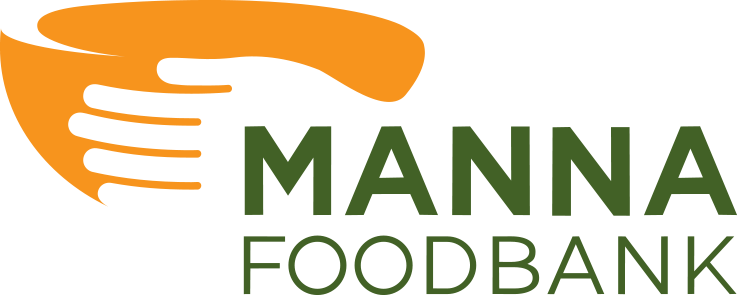SNAP FAQs

Am I Eligible for Food Benefits?
SNAP can help people struggling with food insecurity buy the food they need. Benefits are provided on an Electronic Benefits (EBT) card, which is similar to a debit card, and are accepted at most grocery stores and food retailers. MANNA staff and volunteers can help you determine your eligibility and complete your application or recertification over the phone. You can also apply directly at your county’s Department of Social Services (DSS).
The maximum benefit amount for households receiving Food and Nutrition Services increased for the period of Oct. 1, 2023 through Sept. 30, 2024. To receive SNAP benefits, you need to meet certain income criteria and other guidelines. View current income limits below:
| Household Size | 200% Maximum Gross Income Limit* | Maximum Benefit Allotment |
| 1 | $2,430 | $291 |
| 2 | $3,288 | $535 |
| 3 | $4,144 | $766 |
| 4 | $5,000 | $973 |
| 5 | $5,858 | $1,155 |
| 6 | $6,714 | $1,386 |
| 7 | $7,570 | $1,532 |
| 8 | $8,428 | $1,751 |
| Each additional member | +858 | +219 |
*Most SNAP households fall under the 200% Maximum Gross Income Limit.
Gross income means a household’s total, non-excluded income, before any deductions have been made. Net income means gross income minus allowable deductions.
Categorically eligible households are not subject to the resource, gross, and net income limits. Non-categorically eligible households are subject to resource, gross, and net income limits. Non-categorically eligible households that contain specified individuals are only subject to the resource and net income limits.
How Do I Check My Benefits?
Here’s how you can check the availability of your benefits:
- Call 1-888-622-7328.
- Visit www.ebtedge.com. Click “More Information” under EBT Cardholders.
- Download the ebtEDGE mobile app. The app is available as a free download on the Apple Store and Google Play.
Do you need to be employed to apply for SNAP?
There are some general work requirements for those who are 16-59 years old and able to work, including registering for work, participating in SNAP E&T, taking a suitable job if offered, and not quitting or reducing work hours below the limit without a good reason. These do not apply to those already meeting the specified work hours, taking care of a dependent, participating in a substance treatment program, unable to work due to a mental or physical limitation, or those in school or training programs at least part-time. Typically, able-bodied adults without dependents (ABAWDs) ages 18-49 can only receive SNAP benefits for three months within a 36-month period unless they are participating in at least 20 hours of work-related activities per week.
Can Non-Citizens Apply for Benefits?
SNAP participation is limited to U.S. citizens and some lawfully present non-citizens who meet the income and resource requirements. Lawfully present non-citizens may qualify if they meet the general requirements and have additionally lived in the U.S. for at least five years, are receiving disability-related benefits, and/or are under 18 years of age. If you have eligible household members who are dependents, then you can apply for them even if you are ineligible.
SNAP, WIC, TEFAP – What’s the Difference?
SNAP, WIC, and TEFAP are three separate federally funded health and nutrition programs supporting low-income individuals and families in the U.S. If the eligibility requirements are met for each, it is possible to qualify for all three programs at the same time.
The Women, Infants, and Children (WIC) program provides supplemental food assistance for low-income women who are pregnant or postpartum, infants, and children up to five years of age. Single fathers, foster parents, and guardians who have custody of their children can also apply. Through WIC, participants can get nutritious foods, nutrition education, and breastfeeding support. Benefits for the program are either distributed through WIC checks or an EBT card. EBT cards for SNAP are loaded with a predetermined amount of cash benefits, while WIC benefits involve a monthly food package of approved foods and amounts of these based on the participant’s category (pregnant, postpartum, infant, or child). The only cash value benefit on WIC cards are for fruits and vegetables. As WIC and SNAP are both Food and Nutrition Service (FNS) programs, potential recipients can apply for both online via E-PASS.
The Temporary Emergency Food Assistance Program (TEFAP) provides supplemental food assistance for low-income households. Through the program, the U.S. Department of Agriculture purchases nutritious foods and makes them available to state distributing agencies who then distribute the food to organizations (soup kitchens, food pantries, etc.) directly serving the public. Participants can access benefits by visiting these food distribution locations. There is no standard form to fill out for the program and eligibility standards vary by state. The burden of proof is generally lower for this program than other federal food assistance programs. Participants who are already participating in SNAP, WIC, or another low-income benefits program will most likely qualify for TEFAP.
Non-Discrimination Notice
In accordance with federal civil rights law and USDA civil rights regulations and policies, the USDA, its agencies, offices, and employees, and institutions participating in or administering USDA programs are prohibited from discriminating based on race, color, national origin, religion, sex, gender identity (including gender expression), sexual orientation, disability, age, marital status, family/parental status, income derived from a public assistance program, political beliefs, or reprisal or retaliation for prior civil rights activity, in any program or activity conducted or funded by USDA (not all bases apply to all programs). Remedies and complaint filing deadlines vary by program or incident.
Persons with disabilities who require alternative means of communication for program information (e.g., Braille, large print, audiotape, American Sign Language, etc.) should contact the responsible Agency or USDA’s TARGET Center at (202) 720-2600 (voice and TTY) or contact USDA through the Federal Relay Service at (800) 877-8339. Additionally, program information may be made available in languages other than English.
To file a program discrimination complaint, complete the USDA Program Discrimination Complaint Form, AD-3027, found online at How to File a Program Discrimination Complaint and at any USDA office or write a letter addressed to USDA and provide in the letter all of the information requested in the form. To request a copy of the complaint form, call (866) 632-9992. Submit your completed form or letter to USDA by: mail: U.S. Department of Agriculture, Office of the Assistant Secretary for Civil Rights, 1400 Independence Ave. SW, Washington, D.C. 20250-9410; fax: (202) 690-7442; or e-mail: program.intake@usda.gov.
